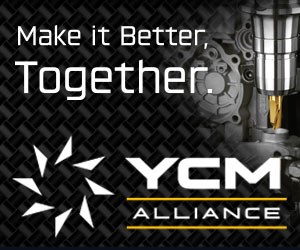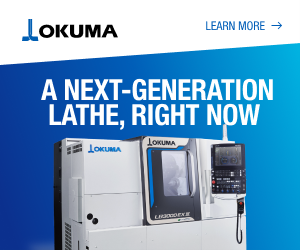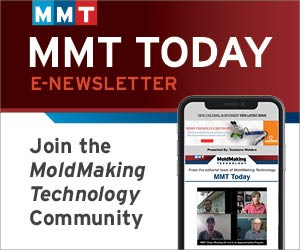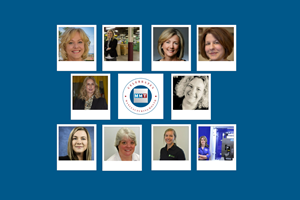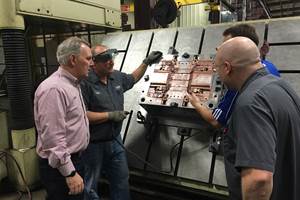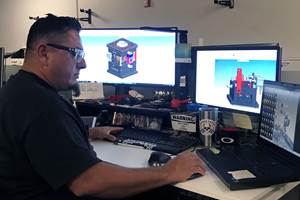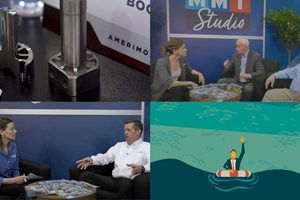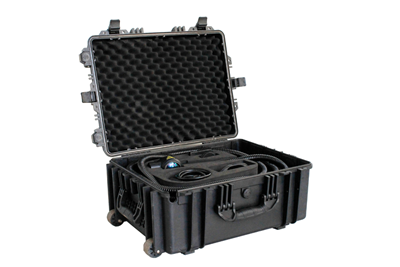Capital Spending and Hiring on the Rise for Midsized Manufacturers, but Increasing Costs Cause Concern
Prime Advantage, the leading buying consortium for midsized manufacturers, announced the results of its seventh Prime Advantage Group Outlook (GO) Survey, revealing the top economic concerns of small and midsized North American manufacturers for 2011.
The survey results show companies are even more confident compared to six months ago about economic growth for U.S. manufacturing in 2011. Moreover, these results support the latest findings in the Prime Advantage Group CFO Survey, which showed optimistic expectations for revenue growth, hiring, and capital spending despite growing concerns over rising costs.
“Our members, who represent a diverse cross section of manufacturing industries, are experiencing stronger growth and plan to invest back in their businesses, whether through capital expenditures or hiring more employees,” stated Louise O’Sullivan, founder and CEO of Prime Advantage. “What’s unique and challenging about this rebound is the rate at which firms must address pricing inflation in both raw materials and components. As a buying group, with leveraged programs based on group volume, our members are positioned a little ahead of the curve and our job is to make sure we help them maintain that advantage.”
Highlights of Findings
• Seventy-two percent of the small and midsized manufacturing professionals who took the survey reported that their companies expect revenue increases in 2011, with 24 percent expecting increases of more than 10 percent
• The top three cost pressures for the next six months are: the cost of raw materials (with 96 percent including it in the top three concerns), followed by inflation (52 percent) and healthcare (37 percent)
• Sixty-five percent plan capital expenditures for manufacturing equipment and tools in 2011, greatly triggered by available federal tax credits
• More than eighty percent said their companies were making changes toward developing more sustainable products, largely driven by customer requirements and compliance regulations
• While 40 percent of respondents that source products from off-shore vendors are planning to bring sourcing back to North America in the near future, indicating a rebalancing in sourcing strategy, another 60 percent are planning to add more offshore vendors.
Revenue Expectations in 2011 are Bright
The percentage of respondents who anticipate revenue increases in 2011 has doubled compared to just six months ago (72 percent in February 2011 compared to 36 percent in August 2010), a clear indication that small and midsize U.S. manufacturers have a strong sense of optimism about the economy. In addition, only a trivial three percent said they expected a decrease in revenues compared to 2010, a great decline from last year, when 18 percent predicted decreasing revenues for the last six months of 2010.
Not only did 41 percent report that they expect an increase in capital spending from 2010 levels, but 65 percent said they planned to invest in manufacturing equipment this year. More than 80 percent of these respondents also said that federal business investment tax credits were responsible for their planned capital improvement purchases.
Employment, Education and Technology
Almost half of surveyed companies believe there will be an increase in hiring over the next six months, and 49 percent expect employment to remain at 2010 levels. Only three percent predict a reduction in current workforce levels. This finding reveals more optimism among Prime Advantage members than in respondents to the Spring 2011 KPMG survey of U.S. manufacturing executives, in which only 37 percent expected rising employment in their companies in the next year.
The most important supply chain-related educational needs for these manufacturers over the next 12-18 months include sourcing and procurement education (45 percent), strategy and leadership (41 percent), risk management (41 percent) and demand management (34 percent).
When asked about the status of supply chain technology adoption in key areas such as Sales & Operation Planning, Business Intelligence, Inventory Optimization, Spend Visibility, Spend Analysis and Supply Chain Visibility, on average about half are fully deployed, partially deployed, or launching, with most falling in the later stages of deployment. Of those fully or partially deployed, most are ERP-based and very few to none are solely cloud-based. Around 23 percent are in the process of investigating solutions. Still, only 27 percent of manufacturers are not on any track to investigate or deploy such solutions.
Nearshoring Trend Exists, But Does Not Dominate Sourcing Strategy While 40 percent of respondents who source products from offshore vendors are planning to bring sourcing back to North America in the near future, the majority of respondents (60 percent) plan to add more offshore vendors. These results reflect a slight rebalancing or correction in sourcing strategy from the last decade’s massive offshore sourcing trend rather than a full pendulum swing back to buying domestic products.
Top Cost Pressures: Raw Materials, Inflation and Health Care The top three cost pressures that most concern mid-sized manufacturing companies over the next six months include the cost of raw materials with 96 percent including it in top three concerns and 76 percent citing as the top concern, followed by inflation (52 percent selected as the second strongest cost pressure) and healthcare (37 percent selected as the third strongest cost pressure). In every Group Outlook survey conducted since June 2008, the cost of raw materials (such as metals and plastics) has appeared as the top cost pressure, but the number of respondents citing this as the top concern has grown steadily as the economy has improved (from 36 percent just a year ago, to 51 percent six months ago).
Interestingly, costs related to consolidating vendors was cited as the lowest concern, by 66 percent, an indicator of the respondents’ confidence in Prime Advantage’s ability to provide a network of qualified suppliers.
Biggest Obstacle in Purchasing: Forecast Accuracy When asked about potential obstacles that would prevent their companies from achieving their purchasing goals, survey respondents overwhelmingly cited the ability to maintain forecast accuracy and demand variability (76 percent), followed by the ability of suppliers to keep pace on predictable demand (41 percent) and to manage understaffed purchasing departments (39 percent). The 2010 Gartner Supply Chain Survey echoed this, as 59 percent of respondents ranked forecast accuracy/demand variability as the biggest obstacle to achieving supply chain goals.
Driving Factors Behind Sustainability Efforts The ability to offer products that are more sustainable or energy efficient has become a huge focus for small and midsized manufacturers, with 81 percent of respondents acknowledging this change in focus in product development processes. The biggest driving factors behind these changes are customer requirements (80 percent), followed by compliance regulations (53 percent) and shareholder directives (12 percent). In addition, 57 percent of respondents have also started buying more sustainable indirect products for internal consumption.
In the past 10 years, Prime Advantage has returned more than $110 million in rebates and discounts to its members. These real savings are helping U.S. companies gain a powerful competitive advantage.
Methodology: In February, Prime Advantage surveyed executives and purchasing professionals that represent durable goods manufacturing firms, with annual revenues ranging between $10 million and $10 billion, of which the majority ranges between $20 million and $500 million. The survey received a 14 percent response rate from 528 top professionals representing U.S.-based manufacturers in more than 25 different industries, including commercial foodservice, packaging, truck and trailer, material handling, food processing and construction.
To request a copy of the Prime Advantage 2011 Group Outlook Survey visit:
www.primeadvantage.com/groupoutlook/. *Graphics of survey data available upon request.
Related Content
Women Impacting Moldmaking
Honoring female makers, innovators and leaders who are influencing our industry's future.
Read MoreOEE Monitoring System Addresses Root Cause of Machine Downtime
Unique sensor and patent-pending algorithm of the Amper machine analytics system measures current draw to quickly and inexpensively inform manufacturers which machines are down and why.
Read MoreMold Design Review: The Complete Checklist
Gerardo (Jerry) Miranda III, former global tooling manager for Oakley sunglasses, reshares his complete mold design checklist, an essential part of the product time and cost-to-market process.
Read MoreFrom Injection Mold Venting to Runnerless Micro Molds: MMT's Top-Viewed June Content
The MoldMaking Technology team has compiled a list of the top-viewed June content based on analytics. This month, we covered an array of topics including injection mold venting, business strategies and runnerless micro molds. Take a look at what you might have missed!
Read MoreRead Next
Are You a Moldmaker Considering 3D Printing? Consider the 3D Printing Workshop at NPE2024
Presentations will cover 3D printing for mold tooling, material innovation, product development, bridge production and full-scale, high-volume additive manufacturing.
Read MoreHow to Use Strategic Planning Tools, Data to Manage the Human Side of Business
Q&A with Marion Wells, MMT EAB member and founder of Human Asset Management.
Read MoreReasons to Use Fiber Lasers for Mold Cleaning
Fiber lasers offer a simplicity, speed, control and portability, minimizing mold cleaning risks.
Read More


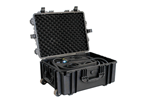

_300x250 4.png;maxWidth=300;quality=90)



.jpg;maxWidth=300;quality=90)



